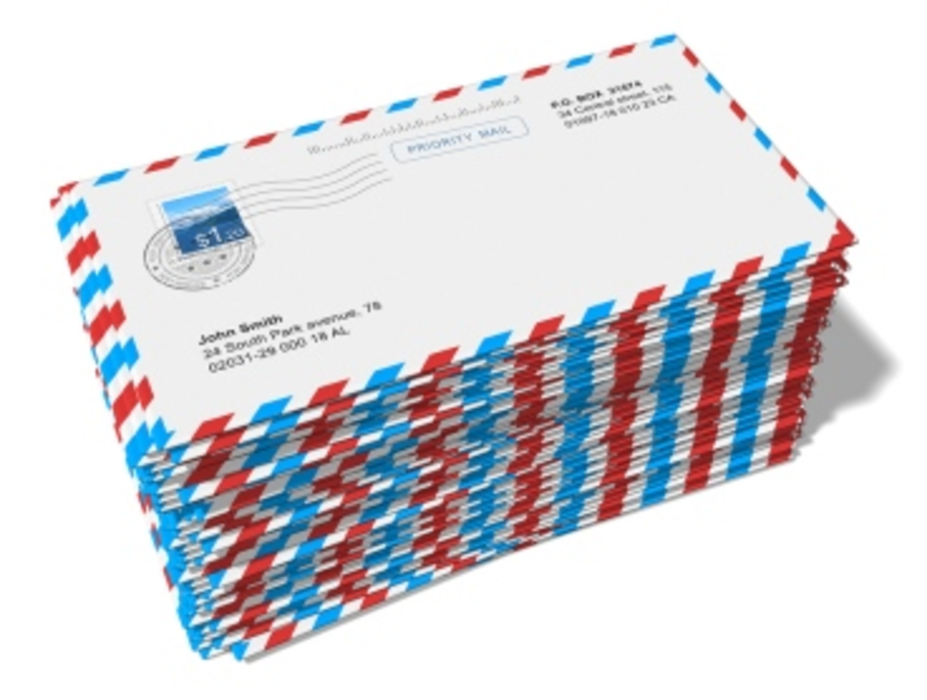Exigent rate increase—three words that strike fear into the hearts of direct mailers. It’s an increase that comes above and beyond the regular, annual rate adjustment, which is capped by the Consumer Price Index. If passed, it could be a game-changer for marketers who depend on direct mail.
Well,start trembling, mailers.
The Affordable Mail Alliance claims to have information that the Postal Board of Governors will be considering such an increase in September. The Alliance, formed by concerned associations including the Direct Marketing Association and the American Catalog Mailers Association, sent a letter yesterday to Postal Board Chairman Mickey D. Burnett warning of dire consequences to an exigent increase.
“The mailing industry, and its suppliers, responsible for $1.3 trillion in sales annually, and nearly 8 million private sector jobs,” the letter read, “are unanimous in our great concern that, notwithstanding the Postal Service’s ongoing financial predicament, an ‘exigent’ increase would cause severely adverse, and likely irrevocable, consequences for mail volume and revenue.”
The letter went on to point out that, in light of proposed legislative reform and improved 3Q results at the Postal Service, an exigent increase is premature. It stated that it “would not only be profoundly ill-advised, but clearly self-defeating to recovering postal financial stability.”
The U.S. Postal Service may ask for an exigent increase only due to “extraordinary or exceptional circumstances,” according to the Postal Accountability and Enhancement Act of 2006. The request is then subject to the approval of the Postal Regulatory Commission (PRC), which must be convinced that the increase is necessary to maintain postal service under the stewardship of an “honest, efficient, and economical management.”
With Postmaster General Patrick Donahoe insisting that reform be enacted immediately to save the Postal Service from financial disaster, the threat of an exigent rate increase worries direct mailers. If Congress can’t be called upon to save USPS, business mailers no doubt will try.
Last year they sent some 87 billion pieces, 54% of all mail posted, according to the Direct Marketing Association. A rate increase in excess of 5%—asked for by USPS and denied by PRC in 2010—would substantially increase revenue. Meanwhile, one of the two bills being considered by Congress, the Senate’s Carper-Coburn Postal Reform Act, would remove rate-setting review from the PRC and return the power to increase rates to USPS.
Even if Carper-Coburn’s rate-setting rule were to pass, USPS management would still be required to present the same case for extraordinary circumstances combined with economical management to its Board of Governors. But Donahoe and his senior managers took learnings away from the PRC’s 2010 denial of a 5.6% increase that could help fashion a successful request in the near future.
“It was the first time they ever asked for an exigent increase and they were trying to feel their way,” says Steve Sharfman, general counsel of the PRC.
One aspect of the USPS’s case that would need to be sharpened the next time around is necessity. In the 2010 case, PRC agreed that recessionary financial repercussions presented the exceptional circumstances that merited an increase. But the Commission disagreed that the 5.6% boost was needed to keep USPS in business, instead opining that the extra revenue was intended for long-term financial obligations.
“In its decision, the Commission said that there was an exceptional circumstance but that [USPS] was not able to show that the amount of [increase] was due to the circumstance,” Sharfman recalls. “The Commission said ‘You are free to come back another time and show us.’”
The Postal Service instead filed suit against the PRC, but the court agreed with PRC’s determination. “They didn’t take us to court again. They probably were listening to their customers that this was not a smart move,” Sharfman says.
Prior to 1970, USPS was a full-fledged government entity, the Postmaster General was a cabinet member, and the agency had authority to set its own rates. In that year, however, Congress passed a law to set up USPS as a quasi-governmental authority and created the PRC—then known as the Postal Rate Commission. When the Postal Service wanted to change rates, it sent a proposal to PRC, which sent back a recommendation. A unanimous vote of the Board of Governors was needed to modify a Commission’s recommended rate increase. In 35 years, USPS only managed it twice.
So direct mailers, take heart. Should USPS have occasion to seek an exigent increase, with or without new legislation, it will still have to meet the same requirements set under the 2006 postal reform act, endure a period of public comment, and get Postal Governors (assuming they aren’t removed by new legislation) to agree on it. And should Carper-Coburn be enacted, returning rate control to the Postal Service, the Postal Governors’ vote must be unanimous.





